Click on Download Link to download Video
Download
Twenty22 has been unusually jam-packed for anime on TV in just the last few months, with scores of eagerly awaited originals, adaptations, and returning favorites all tying in with one another. There were some difficult decisions to be made in order to pick the 10 finest anime TV shows of the year, including the explosive action of Chainsaw Man, the romantic comedy of Kaguya-sama, and the healing drama of Do It Yourself! Even while sci-fi odysseys like The Orbital Children and the contagious wacky oddity Akiba Maid War, among others, only received honorable mentions, the submissions we’ve included here are simply that imaginatively risky and aesthetically captivating. These are the best anime shows of the year, ranging from the thrilling to the heartwarming and the downright weird.
10. Lycoris Recoil
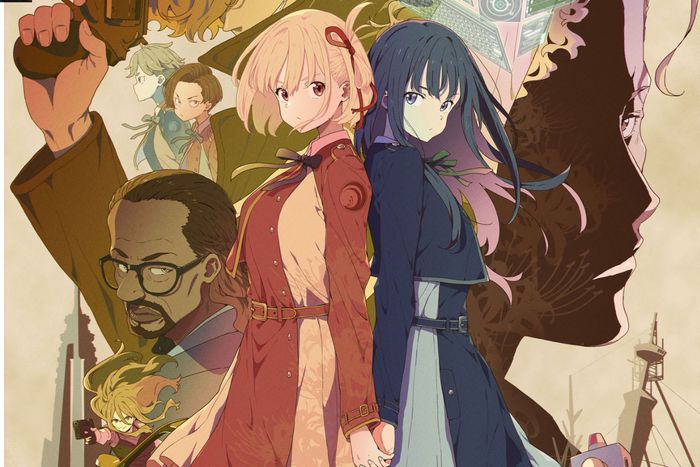
The girls-with-guns action anime original Lycoris Recoil, from directors Shingo Adachi and Asaura, is a springtime standout (with vociferous support from Hideo Kojima). It offers a delightful contrast of silly, easygoing slice-of-life moments and impactful violence as it follows main characters who assist in running a café while handling mercenary contracts on the side. The reserved Takina is demoted in the first episode of Lycoris, a clandestine group of all-girl assassins who execute criminals covertly to uphold an “era of peace.” Lycoris is named after the spider lily. She is sent to LycoReco Café, a front for a different agency division. There she meets Chisato, a fellow dangerous youngster whose upbeat personality contrasts Takina’s reserve, and their buddy action-comedy relationship (with overt love overtones) begins.
The first change to that formula is that Chisato has given up murdering, though that doesn’t imply she won’t inflict bodily injury when necessary. Instead, she now uses rubber bullets in addition to her almost superhuman, very amusing capacity to avoid gunfire. Even though Chisato easily avoids gunshots, her battling throughout challenges the viewer’s ability to suspend disbelief. Since the couple is so untouchable, the fights are great, and both the actual and simulated gunfights and hand-to-hand fighting are entertaining to watch until the show’s larger conspiracy narrative complicates matters for them. Lycoris Recoil never compromises its moment-to-moment, episode-to-episode accessibility, and its characters are as endearing as they are dangerous, even when it transitions to a longer-form plot.
9. Do It Yourself!
 Do It Yourself!, an anime about amateurs with a somewhat crazy edge, is one of the few programs this year that feels wonderfully joyful. Endearing puns abound, starting with the protagonist’s name, Yua Serufu (“yourself”), which should give away the type of program it is: the main character has a pet pig that sports eyeglasses. Miku “Purin” Suride and Serufu were childhood friends, but their relationship soured when they attended different high schools because of the show’s futuristic “Fourth Industrial Revolution” scenario. Miku attends a prominent vocational school. Serufu enrolls in a more conventional girls’ school when she accidentally joins the DIY club, which is becoming more and more outmoded. There, she starts personal initiatives with a steadily growing group of eccentric, adroit kids. Each character’s hair has a distinct hue under the primary shade, which is one of my favorite design elements. Together, these elements provide a pleasing, tactile visual experience that complements the show’s central plot.
Do It Yourself!, an anime about amateurs with a somewhat crazy edge, is one of the few programs this year that feels wonderfully joyful. Endearing puns abound, starting with the protagonist’s name, Yua Serufu (“yourself”), which should give away the type of program it is: the main character has a pet pig that sports eyeglasses. Miku “Purin” Suride and Serufu were childhood friends, but their relationship soured when they attended different high schools because of the show’s futuristic “Fourth Industrial Revolution” scenario. Miku attends a prominent vocational school. Serufu enrolls in a more conventional girls’ school when she accidentally joins the DIY club, which is becoming more and more outmoded. There, she starts personal initiatives with a steadily growing group of eccentric, adroit kids. Each character’s hair has a distinct hue under the primary shade, which is one of my favorite design elements. Together, these elements provide a pleasing, tactile visual experience that complements the show’s central plot.
8.Chainsaw Man
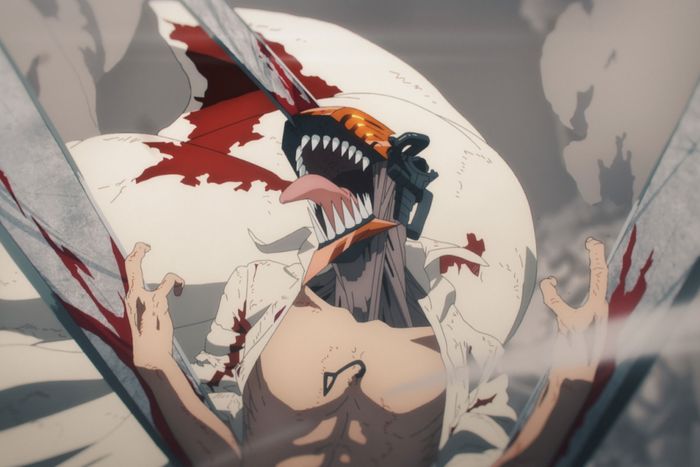 The highest-profile film of the year is easily Chainsaw Man, which was adapted from the brilliant Tatsuki Fujimoto comic. The U.S. Consumer Product Safety Commission even took note. It takes place in a universe where demons known as Devils stand in for everyday objects like a tomato and the Four Horsemen of the Apocalypse. They are widespread enough that civilization need Devil Hunters, who slay their prey while donning straightforward (but stylish) suits and ties. Enter Denji, a young person from a difficult background whose only option is to become a hunter. Denji, who was deceived and left for dead, comes back to life as Chainsaw Man, a hybrid of the devil and a man. He is hired, and things quickly spiral out of control after that.
The highest-profile film of the year is easily Chainsaw Man, which was adapted from the brilliant Tatsuki Fujimoto comic. The U.S. Consumer Product Safety Commission even took note. It takes place in a universe where demons known as Devils stand in for everyday objects like a tomato and the Four Horsemen of the Apocalypse. They are widespread enough that civilization need Devil Hunters, who slay their prey while donning straightforward (but stylish) suits and ties. Enter Denji, a young person from a difficult background whose only option is to become a hunter. Denji, who was deceived and left for dead, comes back to life as Chainsaw Man, a hybrid of the devil and a man. He is hired, and things quickly spiral out of control after that.
In contrast to Fujimoto’s fast-paced experimentalism with comic-book vocabulary, series director Ryu Nakamura offers a sumptuous, surprisingly patient interpretation of the manga. The show’s humour is a touch more deadpan, and its framing is calculated, chilly, and realistic. Each chapter is filled with subtle physical acting for the animated characters as well as personal drama. The outcomes are miraculous. Certain deaths are more painful because of those extra brief humanising moments. The cinematic opening, the ever-evolving end titles for each episode, and Kensuke Ushio’s energetic, off-kilter tune all include hints of the manga’s tone and symbolism. Even though the tale is still in its early stages and has already shown wild turns and vicious cruelty, the adaptation has already spared no cost in smoothing out the series’ growing pains with its scariest moments just over the corner. Chainsaw Man is arguably more intriguing because of that possibility.
7.Cyberpunk: Edgerunners
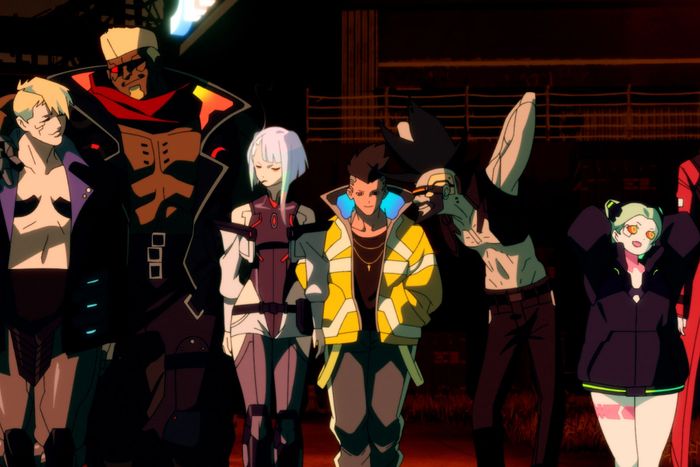 One of the most successful marketing gimmicks of the last ten years may be Cyberpunk: Edgerunners. The series, created by Rafal Jaki and directed by Hiroyuki Imaishi (best known for the series Tengen Toppa Gurren Lagann and the movie Promare) and his team at Studio Trigger, practically changed public opinion on this infamous video game whose tragic storyline drove up player numbers so they could co-finance the production. For example, take last year’s excellent Arcane or the glut of other Netflix commissions including Tekken: Bloodline and Castlevania.
One of the most successful marketing gimmicks of the last ten years may be Cyberpunk: Edgerunners. The series, created by Rafal Jaki and directed by Hiroyuki Imaishi (best known for the series Tengen Toppa Gurren Lagann and the movie Promare) and his team at Studio Trigger, practically changed public opinion on this infamous video game whose tragic storyline drove up player numbers so they could co-finance the production. For example, take last year’s excellent Arcane or the glut of other Netflix commissions including Tekken: Bloodline and Castlevania.
The criminal drama’s rise and collapse follows young David Martinez as he strives to succeed. It’s simple enough, but what makes Edgerunners stand out is its visceral presentation, which reveals its raw emotionality. In order to portray life under super-capitalism with a slightly different palette than CD Projekt Red’s infamous video game did, Edgerunners draws inspiration from the works of the original Cyberpunk board-game designer, Mike Pondsmith. The result is a new visual language that is both novel and recognizable. With its crazy layouts, smeared brushstrokes, and intense action, the show’s astonishing sixth episode is a high point of expressiveness. It is followed by a shot of David as a completely hollowed-out guy who is being taught a lesson about the city’s brutality in the worst way conceivable. It’s not a long story—only 10 episodes—but it accomplishes a lot in the time it has. Edgerunners is a remarkable, sad story in and of itself, going beyond picture restoration.
6. My Dress-Up Darling
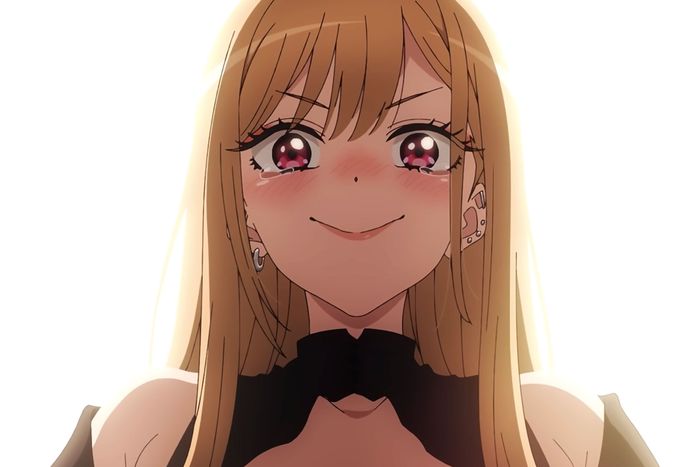 The foundation of Keisuke Shinohara’s slice-of-life romantic animation My Dress-Up Darling, which he directed and which was adapted from the Shinichi Fukuda manga, is two things: learning a new pastime, and sharing one that you love with others. Wakana Gojo, a solitary high school student and aspiring hina doll maker, gets drawn into the socially active Marin Kitagawa’s world. Wakana, who prefers to stay indoors and perfect his craft, finds Marin’s directness and gregarious personality foreign. Wakana is making doll costumes when Marin unexpectedly asks if he may assist her in dressing her as a favourite video game character.
The foundation of Keisuke Shinohara’s slice-of-life romantic animation My Dress-Up Darling, which he directed and which was adapted from the Shinichi Fukuda manga, is two things: learning a new pastime, and sharing one that you love with others. Wakana Gojo, a solitary high school student and aspiring hina doll maker, gets drawn into the socially active Marin Kitagawa’s world. Wakana, who prefers to stay indoors and perfect his craft, finds Marin’s directness and gregarious personality foreign. Wakana is making doll costumes when Marin unexpectedly asks if he may assist her in dressing her as a favourite video game character.
Wakana’s confusion over the numerous anime, games, and other things she exposes him to is a lot of fun in the show, especially when he wishes she hadn’t because Marin is a huge otaku and the game in issue is an ecchi (erotic) game. They have a lovely connection. There is at least a good-natured sense of comedy to the show that is based in hormonal teen discomfort and the developing sentiments between the two characters, even when the programme veers into occasionally blatant fan service and starts to feel a bit uncomfortable. It’s interesting to watch children develop friendships and observe the consideration with which their hobbies are chosen. The programme pays close attention to its characters’ body language and the specifics of the work they love, which CloverWorks beautifully depicted.
5. Spy x Family
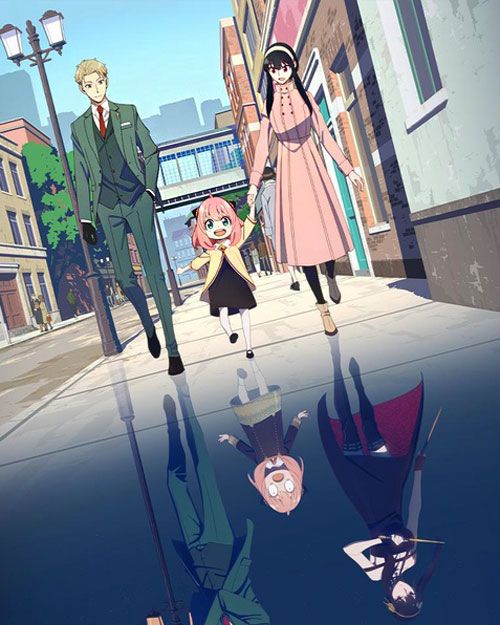 The deceptions of espionage are combined with the pressures of motherhood when secret agent Twilight is charged with creating a family as a cover for a mission in the hilarious spy action comedy Spy x Family. His “wife,” Yor, an assassin known as the Thorn Princess, and their adopted daughter, Anya, who is telepathic and the only one who is aware of what is happening, are both unknown to him. Anya is one of the most endearing characters of the year, and she reacts to situations that should be happening without her knowledge by developing a vast repertoire of facial expressions in response to the thoughts she overhears.
The deceptions of espionage are combined with the pressures of motherhood when secret agent Twilight is charged with creating a family as a cover for a mission in the hilarious spy action comedy Spy x Family. His “wife,” Yor, an assassin known as the Thorn Princess, and their adopted daughter, Anya, who is telepathic and the only one who is aware of what is happening, are both unknown to him. Anya is one of the most endearing characters of the year, and she reacts to situations that should be happening without her knowledge by developing a vast repertoire of facial expressions in response to the thoughts she overhears.
The show is both very funny and heartwarming due to the characters’ various pathologies and Anya’s inability to act on her knowledge in the facade of domesticity, as seen when Yor puts on a polite face but secretly engages in bloodthirsty daydreaming or unintentionally demonstrates freakish strength at a birthday party.
The writers and illustrators of Wit Studio and CloverWorks find entertaining ways to extend the Tatsuya Endo from Shonen Jump+ original material. Some episodes have animators who merely want to show off, as when a little comic book joke is turned into 10 minutes of ridiculous parent-child bonding.
Beyond its stunning visuals, the show’s outstanding music, a jazzy big-band sound with its own eccentricities (such an arrangement of its main theme on the recorder), evokes classic espionage fiction. Spy x Family is one of the best manga adaptations of the year, effortlessly adding its own unique features to the book while maintaining its essence. It is lighthearted but emotionally engaging.
4. Kaguya-sama: Love Is War, Season 3 — Ultra Romantic
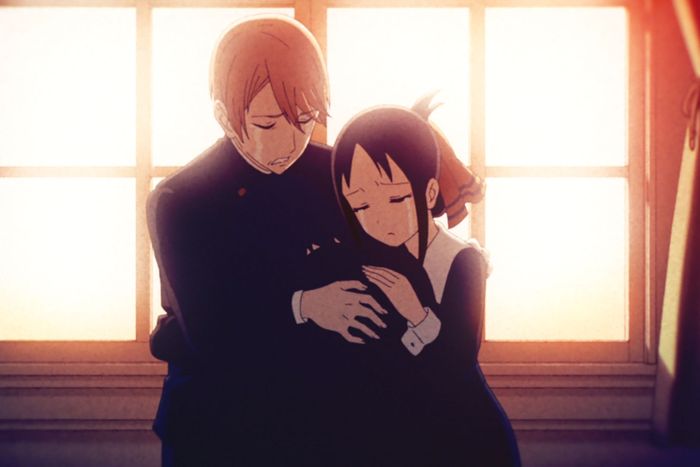 The earliest episodes of the romantic comedy Kaguya-sama: Love Is Conflict made the assertion that “The First to Confess Loses,” but it doesn’t take long for the show to start making fun of the reality that an attritional love war eventually has no winners. Miyuki Shirogane and Kaguya Shinomiya, leaders of the student council at the esteemed Shuuchin Academy, are geniuses capable of coming up with fantastic plans and contingencies but unable to get over their personal fears. As a result, one seeks to make the other confess their crush first. A fresh twist puts them up against a ticking clock, as shown in the wonderful new introduction performed by Masayuki Suzuki, who returns for yet another banger, after two seasons of love stalemate.
The earliest episodes of the romantic comedy Kaguya-sama: Love Is Conflict made the assertion that “The First to Confess Loses,” but it doesn’t take long for the show to start making fun of the reality that an attritional love war eventually has no winners. Miyuki Shirogane and Kaguya Shinomiya, leaders of the student council at the esteemed Shuuchin Academy, are geniuses capable of coming up with fantastic plans and contingencies but unable to get over their personal fears. As a result, one seeks to make the other confess their crush first. A fresh twist puts them up against a ticking clock, as shown in the wonderful new introduction performed by Masayuki Suzuki, who returns for yet another banger, after two seasons of love stalemate.
The anime adaptation of the Aka Akasaka manga, directed by Shinichi Omata, is full of clever, rapid-fire allusions to other anime like Bakemonogatari and Madonna’s music video for “Vogue,” as well as recurrent jokes and textual humour. The manga adaptation amplifies the humour with its own, frequently quite violent visual gags, which have far too many hits to list here. The creative team triples down on the farcicality while pushing themselves to the brink in an early highlight of the new season, a shockingly extravagant rap battle that amps up one of the finest running jokes on the show. This shows their commitment to crazy escalation.
A sense of perceptive modernity permeates the whole book despite its location in a renowned school for the established elite, as seen by chapters on the etiquette of “read receipts” and how they may be disastrous in romance. The staff’s apparently inexhaustible creative well, their attention to the finer points of 21st-century dating, and the show’s overall love arc make Kaguya-sama: Love Is War a fan favourite.
3. Mobile Suit Gundam: The Witch From Mercury
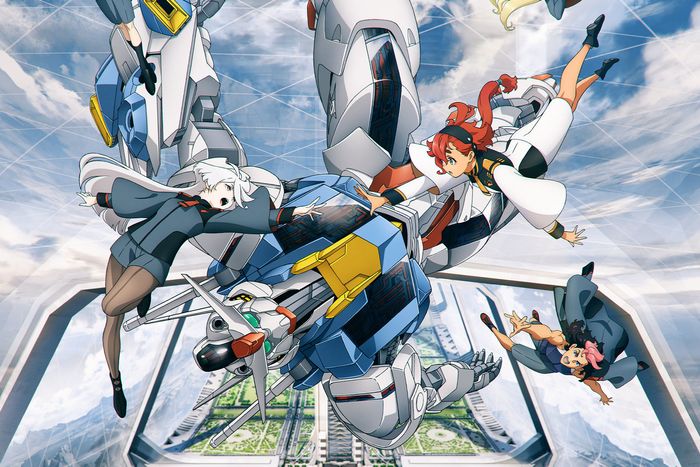 With The Witch From Mercury, the long-running huge robot brand offers anime fans a fresh entry point seven years after the last significant Gundam appearance. It’s a new timeline in the canon, but it’s peppered with meta-references to Gundams tales and characters from the past, and it has a captivating hook that was partially inspired by the ’90s classic Revolutionary Girl Utena (note the hierarchy in the school and the use of duels to settle disputes). The socially awkward Suletta Mercury, who is perhaps the franchise’s most endearing heroine, unintentionally wins her classmate Miorine Rembran’s hand in marriage in the first episode, setting off a chain reaction of conflict and intrigue.
With The Witch From Mercury, the long-running huge robot brand offers anime fans a fresh entry point seven years after the last significant Gundam appearance. It’s a new timeline in the canon, but it’s peppered with meta-references to Gundams tales and characters from the past, and it has a captivating hook that was partially inspired by the ’90s classic Revolutionary Girl Utena (note the hierarchy in the school and the use of duels to settle disputes). The socially awkward Suletta Mercury, who is perhaps the franchise’s most endearing heroine, unintentionally wins her classmate Miorine Rembran’s hand in marriage in the first episode, setting off a chain reaction of conflict and intrigue.
The series’ narrative, concepts, and character names all allude to The Tempest. Each new episode alternates between literally Shakespearean drama and 2-D mecha combat, which are becoming less common given the popularity of 3-D CG animation. Ichiro Kouchi, Hiroshi Kobayashi, and Ry And create an immensely powerful array of characters, each with their own individual characteristics that stand out even in the tiniest amount of screen time. Watching them battle it out with mecha and words, decipher one another’s motives, and traverse the backroom manoeuvring of their corporate-technocrat parents, who use the school as a cover for their shady transactions, is exhilarating. The conglomerate of companies is treated with religious reverence (one of its laws is called Cathedra, while Gundam pilots are disdained as “witches”).
Almost every social, political, and economic interaction is depicted in The Witch From Mercury as a battle, which is what makes it so riveting, as a friend of mine recently pointed out to me: Characters continually compete for the upper hand, play it close to the vest, lob information and misinformation at one another, and feint. However, they are also motivated by simpler, more pure feelings, like parental approbation. The Witch From Mercury is still heating up with a second batch of episodes scheduled for April 2023, despite being lighter than anticipated in its opening run. Its exact depths and the results of its stabby intrigue are yet unknown as it peels back layers of sci-fi world-building, political scheming, and anti-capitalist metaphor alongside organic, complicated relationships.
2. Mob Psycho 100 III
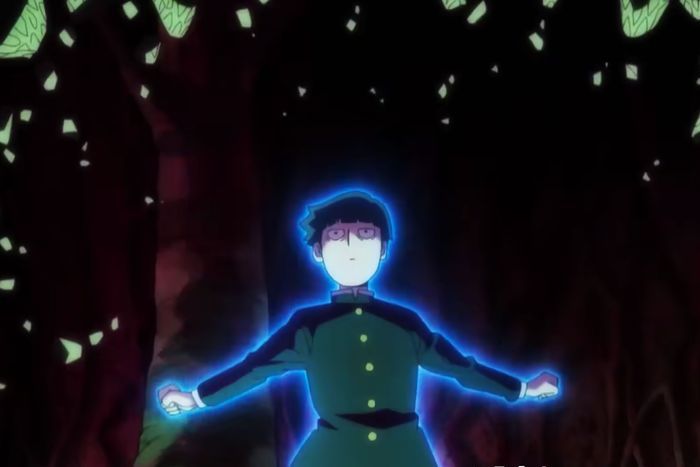 The heroes of manga creator ONE’s stories begin with all the power in the world; the true difficulty is what happens next, in contrast to the continuous power creep of other shonen manga peers. It is existential ennui in his television show One-Punch Man. Middle schooler Shigeo “Mob” Kageyama struggles in Mob Psycho 100 with the same issue that any guy his age would: determining what type of person he wants to be. The third season is divided into small groups of episodes, from its patient windup to a heartbreaking collapse in the relationship between Mob and Dimple, and more that I won’t reveal to anyone still looking to embark on this journey, directed by Takahiro Hasui, who succeeds Yuzuru Tachikawa (now chief director).
The heroes of manga creator ONE’s stories begin with all the power in the world; the true difficulty is what happens next, in contrast to the continuous power creep of other shonen manga peers. It is existential ennui in his television show One-Punch Man. Middle schooler Shigeo “Mob” Kageyama struggles in Mob Psycho 100 with the same issue that any guy his age would: determining what type of person he wants to be. The third season is divided into small groups of episodes, from its patient windup to a heartbreaking collapse in the relationship between Mob and Dimple, and more that I won’t reveal to anyone still looking to embark on this journey, directed by Takahiro Hasui, who succeeds Yuzuru Tachikawa (now chief director).
This production routinely ranks among the best-looking in the business because to its skillful use of visual emotion and the deceptively childlike graphic style of ONE’s comic (and best sounding when you count the score by industry legend Kenji Kawai). Mob Psycho 100 has a good handle on big battles, but a lot of its emotional high points come from unexpected sources, like its thoughtful eighth episode, which Hakuyu Go directed and storyboarded with a looser, incredibly emotive animation style and which follows a group of Mob’s friends on an alien hunt of all things. In addition to its softness, the show joyfully ruins a quietly touching episode with an ending that is among its strangest digressions.
The animated series continues to be really entertaining, with gags like an unattractive T-shirt that transforms into a sort of Chekov’s pistol and jokes that build with time. But it all begins with Mob’s fundamental tenet: He’s not seeking more power to defend people because he already possesses it; instead, he’s attempting to become a fairly well-adjusted human being and make the most of his youth while he still has it. Even as the conditions prompting such contemplation take on catastrophic proportions, the programme places its whole emphasis on emotional development. Mob Psycho 100 III elevates the franchise to new heights with outstanding production, astute writing, and even greater comic timing.
1. Bocchi the Rock!
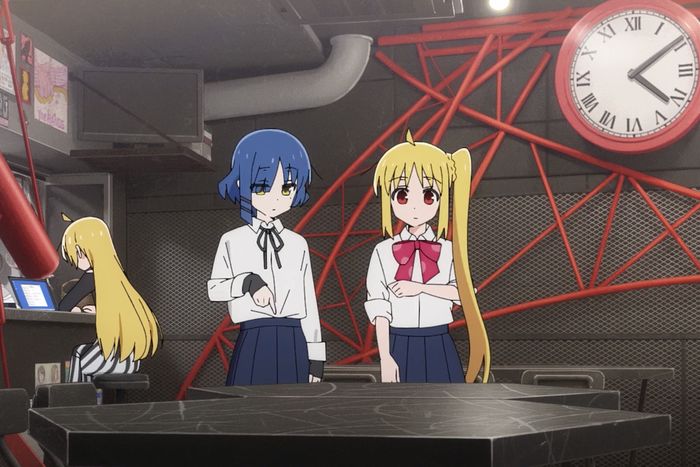 Bocchi the Rock! is unconventional for a programme about a former recluse and a sneaky winner for one of the year’s most artistically diversified series. Hitori Got, who was subsequently given the moniker Bocchi (from the word hittoribocchi, which roughly translates to “lonely”), is the main character and has just one goal in mind: fame. She determines that learning the guitar to virtuoso levels and becoming a rock star is the quickest way to impress people and get over her social anxiety after hearing members of her favourite bands talk about how uncomfortable they were in high school. In the end, she is coerced into joining a band, and the story tracks their gradual development.
Bocchi the Rock! is unconventional for a programme about a former recluse and a sneaky winner for one of the year’s most artistically diversified series. Hitori Got, who was subsequently given the moniker Bocchi (from the word hittoribocchi, which roughly translates to “lonely”), is the main character and has just one goal in mind: fame. She determines that learning the guitar to virtuoso levels and becoming a rock star is the quickest way to impress people and get over her social anxiety after hearing members of her favourite bands talk about how uncomfortable they were in high school. In the end, she is coerced into joining a band, and the story tracks their gradual development.
Bocchi the Rock! pulls uproarious, outrageous, and sympathetic comedy out of its main character’s unreasonable worry, in part because to the variety of animation methods that appear out of nowhere, but it might have been a depressing or cruel programme in the hands of series director Keiichir Sait. No medium is off limits when it comes to how Hitori’s recollections and paranoid delusions are revealed. Popsicle-stick puppet theatre, Claymation, zoetrope, and live-action photography are all viable options.
The show maintains its absurdity even within the constraints of traditional animation, as evidenced by Bocchi’s explosion into a jumble of jagged, glitchy lines at the mere suggestion of creating an Instagram account or by the various ways in which her face melts into bizarre polygonal shapes, reaching a Picasso-esque cubism in her various states of nervousness. With its immersive song performances, the play also makes for energising musical drama when it wants to. The autumn season’s breakout sensation, Bocchi the Rock!, is filled to the brim with anarchic inventiveness.


